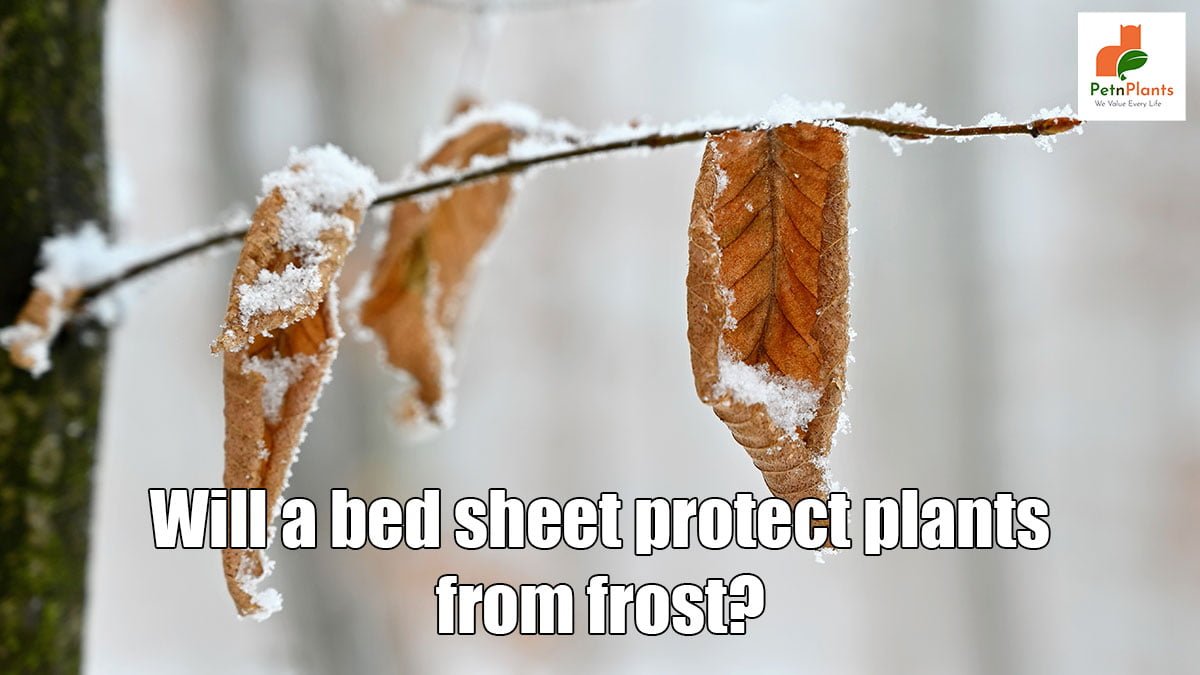How To
Latest
Pet Care
How to Groom Your Dog at Home with the Right Dog Grooming KitMarch 19, 2025
We Value Every Life

If you live in an area where frost is a possibility, you may wonder if a bed sheet can protect plants from frost or the cold. The answer is yes, but there are a few things to remember:
With these tips in mind, you can rest assured that your plants will be safe from frost damage.
Frost is the solid deposition of water vapor from the air onto surfaces. It most commonly appears as white crystals or frozen dew droplets on plant leaves and other objects outside. When these ice crystals form, they release latent heat, which can cause damage to plants. The full formation of frost requires both cold temperatures and humid air.
There are a few different things that can cause frost. One is when the air temperature gets down to 32 degrees Fahrenheit or below, and there is no wind. Another is when the air temperature gets down to about 27 degrees Fahrenheit, but the wind blows. This can cause what is called “wind chill.” And lastly, if there is moisture in the air, like humidity, this can also cause frost.
Frost damage to plants can occur when temperatures drop below freezing. This can cause the water in plant cells to freeze, leading to cell death. Frost damage is most likely to occur on young plants or new growth, as these tissues are more sensitive to cold temperatures. Older, more established plants are typically more resistant to frost damage. To help prevent frost damage, you can cover your plants with a bed sheet or other light fabric when cold weather is forecasted.
While a bed sheet may protect plants from frost, it is not likely to provide enough protection to prevent plant damage. Frost can cause damage to plants by causing the water in the plant cells to freeze, which can lead to the death of the plant. A bed sheet will not offer enough insulation to prevent this from happening. If you are concerned about your plants being damaged by frost, you should take steps to protect them by covering them with a blanket or tarp.
When water droplets freeze on plant leaves, it’s called frost. Frost can damage leaves, causing them to turn brown and papery. It can also damage stems, causing them to break.
Frost is most likely to damage plants when the temperature outside dips below freezing for more than a few hours. But even a light frost can do damage if the plants are already weakened by stress from lack of water or nutrients.
To prevent frost damage to your plants:
In some cases, you may also be able to use a portable heater to keep the air around your plants warm enough to prevent frost damage. Just keep an eye on the temperature and ensure it doesn’t get too hot, which can also damage plants.
It is still best to protect plants from frost by covering them with a bed sheet or fabric. This will help to keep the frost from settling on the leaves and causing damage. If you are using a bed sheet, make sure that it is loose so that air can circulate and prevent the plant from getting too hot.
0